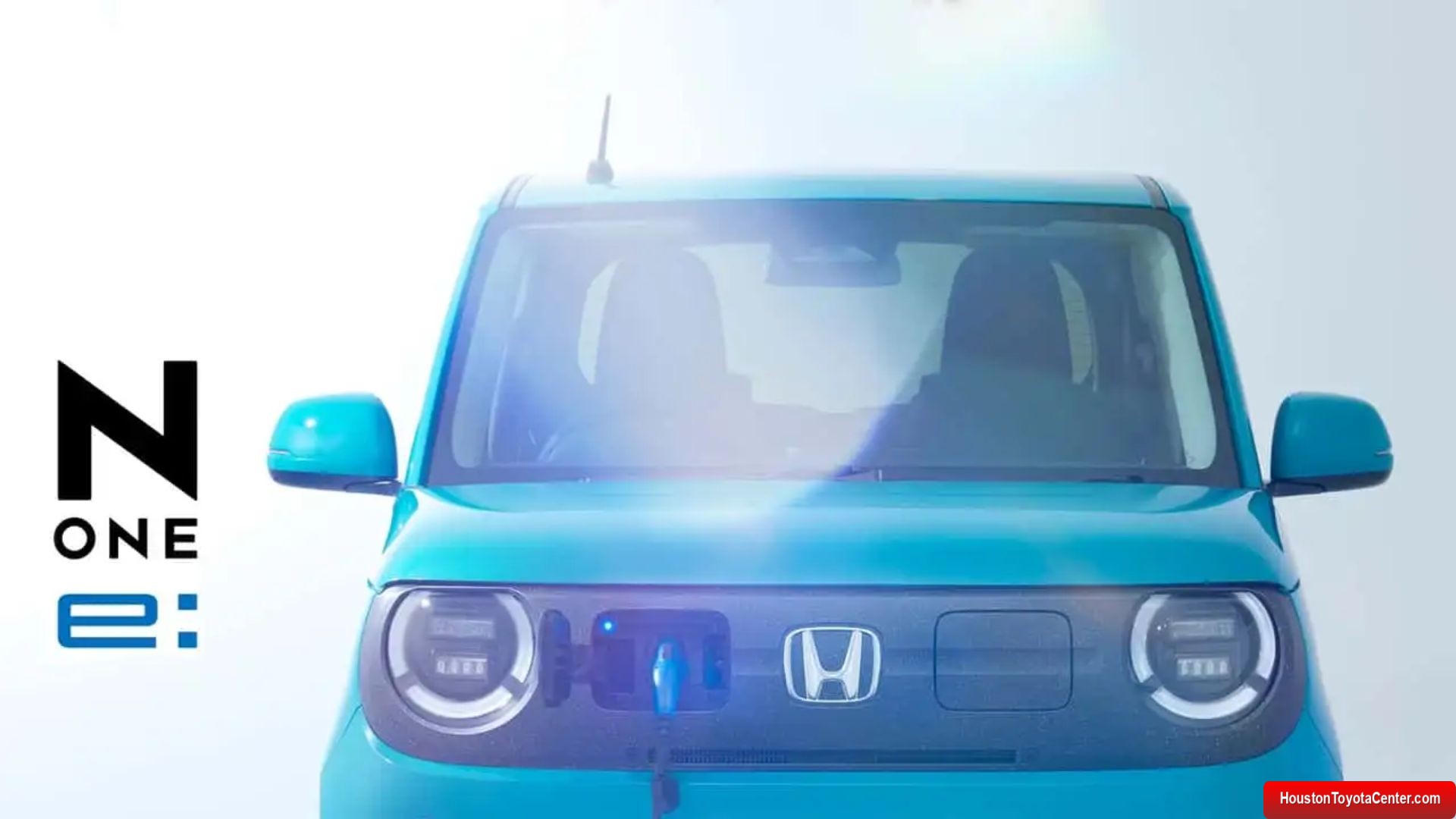In a bold move to capture the urban electric vehicle market, Honda has officially unveiled the prototype of its new mini electric car, the N-One e:, a stylish, compact EV with a “racing car” look and a range of up to 180 km. The reveal took place during the Goodwood Festival of Speed in the United Kingdom, where the camouflaged model sparked curiosity among automotive enthusiasts and industry experts alike.
⚡ A New Chapter in Honda’s Electric Strategy
The N-One e: represents Honda’s latest foray into the compact EV segment, following the lukewarm reception of the Honda e. The new model appears to directly address previous criticisms—especially concerns regarding limited range, high cost, and niche appeal.
Drawing inspiration from the beloved N-One kei car, which has been a success in Japan since 2012, the N-One e: blends retro design elements with a futuristic and performance-inspired visual identity. It features pronounced wheel arches, sporty lines, and a silhouette reminiscent of track-ready vehicles—all while remaining practical for daily urban use.
🏁 Targeting Young, Style-Driven Urban Consumers
While Honda has kept some details under wraps, it’s clear that the N-One e: is being positioned as a youthful and fashion-forward alternative in a growing segment of stylish city EVs.
FREE: Quickly identify and understand problems with your vehicle 🚘
CLICK HERE- In Japan, the N-One e: will retain the compact dimensions of kei cars, in line with local regulations.
- For global markets like Europe, a wider, more robust version is in the pipeline—one that will maintain the sporty appeal while adjusting size and safety features to meet international standards.
This dual-approach strategy is designed to make the N-One e: a truly global mini EV, capable of adapting to a variety of urban landscapes and consumer preferences.
🔋 Range and Performance: Compact Yet Capable
The N-One e: promises a range of up to 180 km on a single charge, placing it ahead of several key competitors in the kei and compact EV category. That’s a significant leap from the Honda e, which struggled with limited range in many markets.
While detailed performance specs are yet to be disclosed, the focus appears to be on balancing urban efficiency with a fun-to-drive personality, a hallmark that Honda is eager to promote through its racing-inspired design language.
🆚 Competition Heats Up: Nissan, Toyota, and BYD in Sight
Honda’s newest EV enters a fiercely competitive segment. Its main rivals include:
| Model | Brand | Range | Key Strength |
|---|---|---|---|
| Nissan Sakura | Nissan | ~180 km | Best-selling EV kei car in Japan |
| BYD Seagull | BYD | ~300 km | Aggressive pricing, advanced battery |
| C+Pod | Toyota | ~150 km | Super compact, ideal for tight cities |
The Nissan Sakura has dominated Japan’s EV kei car segment, while BYD’s Seagull is winning over international markets with its cutting-edge technology and affordability. Toyota’s C+Pod, with its ultra-compact form and 60 km/h top speed, continues to hold niche appeal.
Honda aims to differentiate itself with a premium design approach, a flexible strategy for multiple regions, and strong brand loyalty, especially in Asian markets.
🌍 A Global Push with Local Sensibility
What sets the N-One e: apart is Honda’s intent to make it globally adaptable while maintaining local relevance. The narrow-body kei version caters specifically to Japan’s unique regulations, offering tax breaks and easier maneuverability in dense cities. The wider international version appeals to drivers seeking more space and presence on the road.
This strategy aligns with Honda’s broader vision of sustainable mobility and urban electrification, especially as more governments push for EV adoption and emission reductions in city centers.
📅 What’s Next?
Production details and market launch timelines for the N-One e: are expected to be announced later in 2025. Honda is likely to showcase the vehicle at major international auto shows before beginning sales in selected markets.
Given the rising popularity of compact electric vehicles, Honda’s success with the N-One e: could signal a shift in how traditional automakers approach urban mobility—focusing not just on efficiency, but also on aesthetics, customization, and driving experience.
🔮 The Bigger Picture: Compact EVs as the Future of Cities
The urban electric car segment is increasingly seen as critical to decarbonization strategies across the auto industry. Compact EVs like the N-One e: are more than just trendy; they offer practical solutions to traffic congestion, parking limitations, and environmental concerns in major cities.
With models like the C+Pod and BYD Seagull already paving the way, the next wave of EV competition will be won through innovation in design, battery tech, and user experience.
🗣 Would You Drive One?
Would you choose a Honda N-One e: as your city car? Or do you lean toward models from Nissan, Toyota, or BYD?
Let us know in the comments below — your opinion matters as the EV revolution continues to reshape the roads of tomorrow.


Leave a Reply